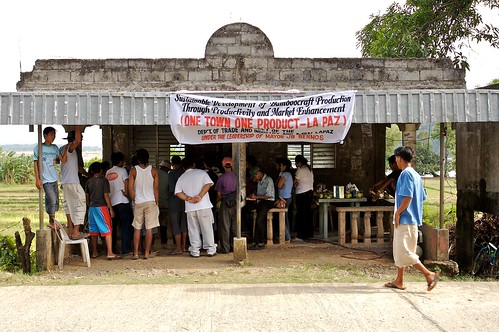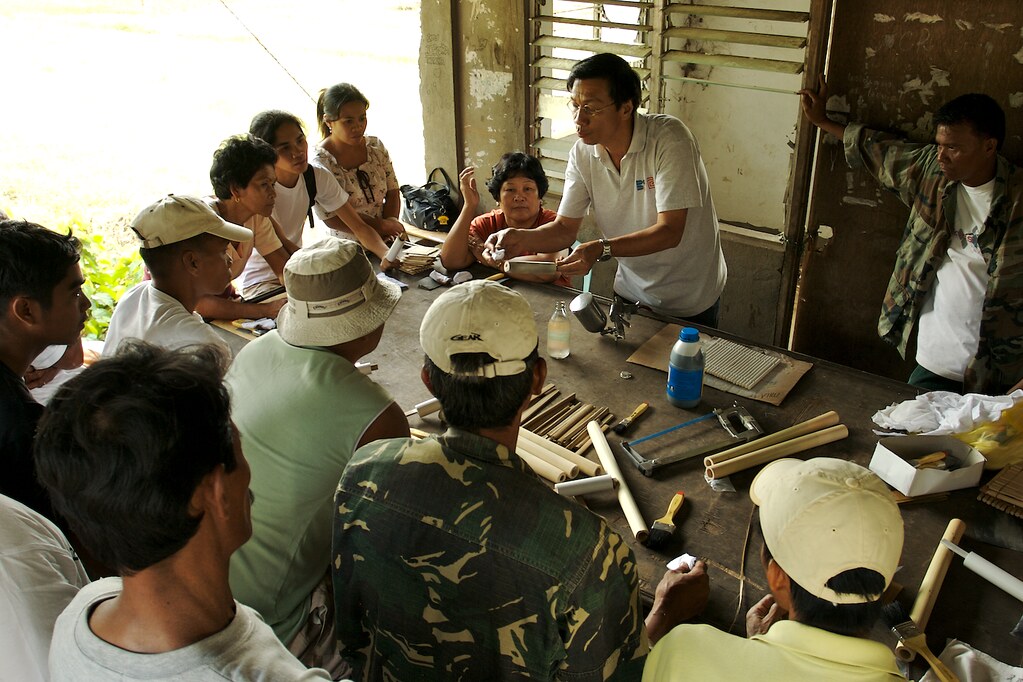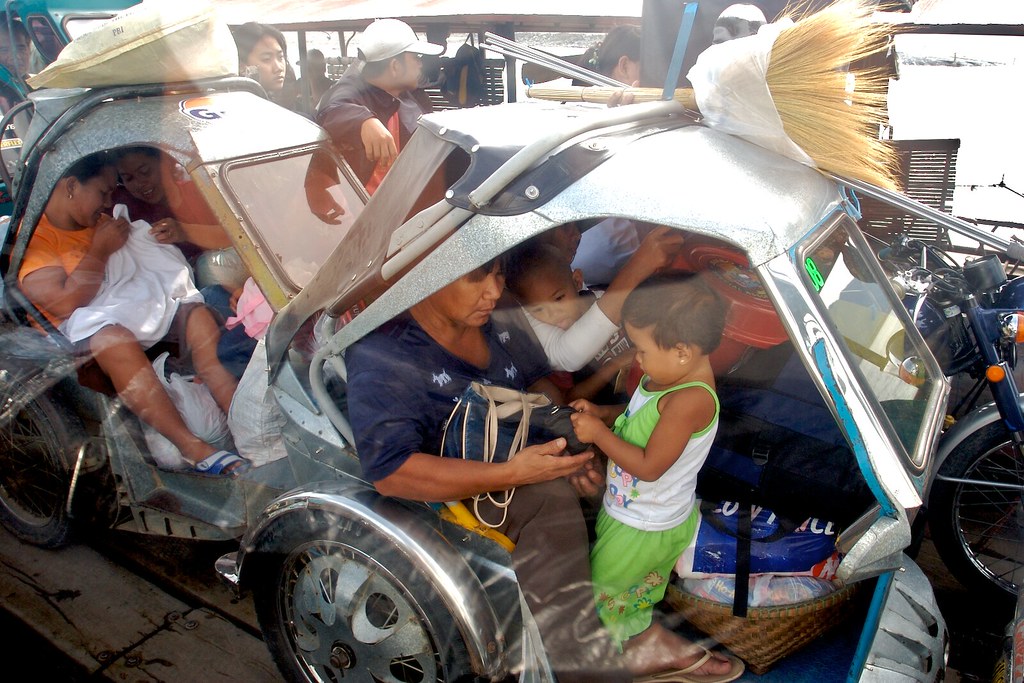We concluded our eventful and educational last day in Abra with a beautiful dinner at Mely's house. All of us were tired from the day but in great spirits. It felt amazing to be in the company of some of the greatest individuals I've ever met in my life: David, Mely, and our new bamboo friend, Dr. Raul, from India who is the president of INBAR and currently working out of Shanghai, China. They all have achieved so much, and at the same time have made a difference in their respective communities/countries. It was one inspiring day and I felt so fortunate.
Thursday, November 15, 2007
Abra Weaves
Despite the low with the workshop, our luck did not fail us. And our trip across the river was not completely wasted as we came across a gem of a spot when Mely took us deeper into the barrio. Only a 10 minute walk from where the workshop was being held, we met a community of weavers using bamboo as there raw material. They were using a native bamboo that had the perfect qualities for creating woven products. We observed beautiful bamboo baskets being woven right in front of our eyes by men and women. We learned that this is where Mely sourced most of her workers, and bamboo, to build her bamboo home. They even showed us their process of making their bamboo flooring - surprisingly basic! This experience showed us exactly how simple it is to work with bamboo. Bamboo allows the common man, women and even child to be involved and easily learn how to create a wide variety of bamboo products as a source of income and a means of livelihood.

But we were not the only observers. The children of the barrio were observing us, too. Again, the children never cease to amaze us with their lively, curious, picture-loving selves.
Posted by
jsigharas
at
4:47 PM
0
comments
![]()
Design Center Workshop
We were disappointed to say the least. We watched as the DCP workshop leader finish the bamboo in somewhat of a creative way, but with toxic paints and other finishes. The fumes alone drove us away from coming any closer. Hmmm...maybe someone should give the Design Center of the Philippines a little workshop on eco-friendly products and practices.
However, there is still light at the end of tunnel. This is where we come in: we saw this as the perfect situation/direction to step into and become pro-active about, and one that could be the most influential. We see that our outside perspective and knowledge of sustainable practices can benefit the market place a great deal. By influencing companies such as Boysen (the largest paint manufacturer, and most used brand in the Philippines) to evaluate their products' ecological and health affects, and invest in the research, production and marketing of an eco-friendly line of products, the road to sustainable growth and development will become much easier. See the blog below for an insightful look into this subject.
Posted by
jsigharas
at
4:02 PM
0
comments
![]()
Masking Eco-Friendlies
Our bamboo tour of the Philippines uncovered massive amounts of exceptional sustainable designs except most had one fatal flaw - caked on toxic coatings. If there was one key message we always tried to suggest it was that you don’t need that much coating on and you should try to use a non-toxic finish. It turns out eco-friendly finishes aren’t easy to come by here and it is unfortunately the one thing that stops these incredible designs from being some of the worlds best eco options. In case you haven’t heard there is a new trend in the world that is here to stay and that is the mainstream arrival of environmentally intelligent products. These products created from regenerative sources are beautiful in design, functional in application, and responsible in environmental impact. The Philippines is privileged to have an abundance of rapidly renewable raw material and skilled workers how know how to work wonders with it. Though this sector is under developed it has the potential to be a booming and regenerative agricultural industry. What is missing to push this industry into the competitive market and towards a completely environmentally friendly final product is the use of non-toxic adhesives and finishes. Toxic glues and finishing coats on products damage the environment, people who worked with them and the end user that lives with it. You may be unaware that much of the products that we furnish our homes and offices with are in fact poisoning our air. Thankfully industries are changing the way they make products. Largely in part to the surge in consumer acceptance of organic goods as well as concepts like cradle to cradle and design for disassembly; The world is experiencing a big wave of eco-conscious consumers that are making the conscious choice to search out product that are not harmful to air quality.
Posted by
A*SUVAJAC
at
3:50 PM
0
comments
![]()
Design Center Workshop
Going to Abra on a whim, and with no plans whatsoever, turned out in our favor. Our timing was just perfect and the Design Center of the Philippines was in town to hold a workshop on bamboo finishing techniques with a barangay . But first we had to get there. We took this ferry (or what acted like a ferry) across the Abra River just to the other side. Did sketchy come to mind? Yes, but it did its job, taking several tricyles, a jeepney and the SUV we were riding in.
Posted by
jsigharas
at
3:47 PM
0
comments
![]()








